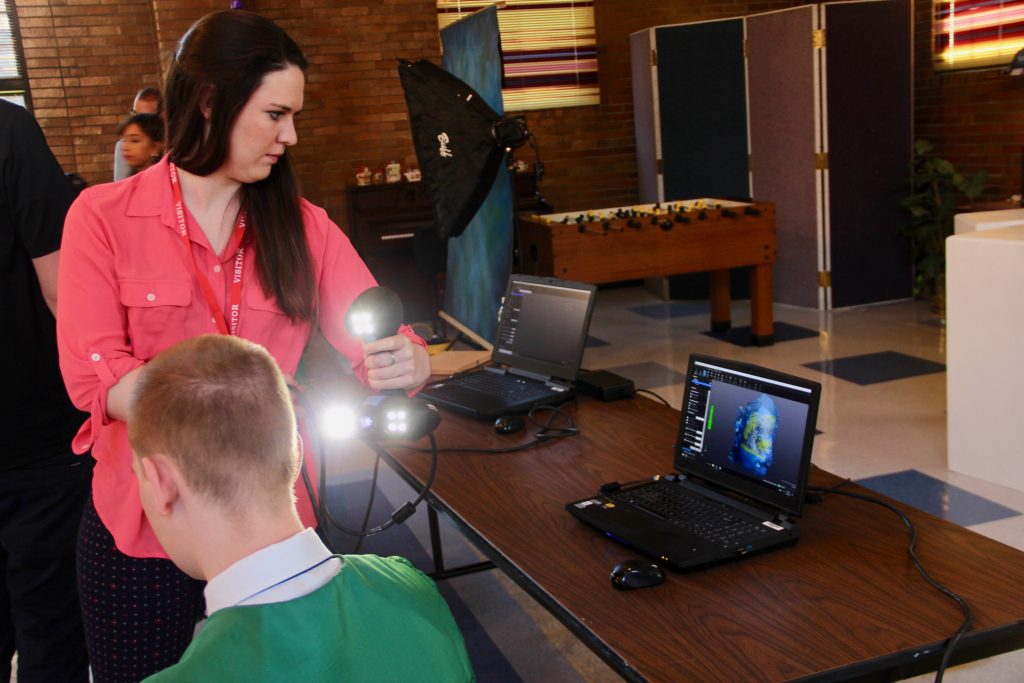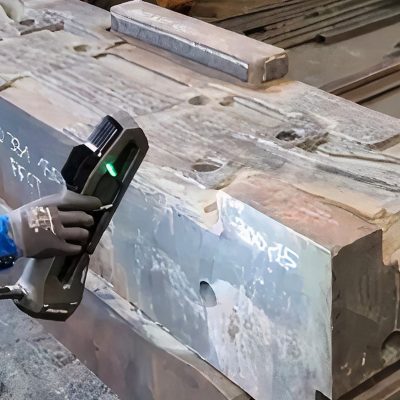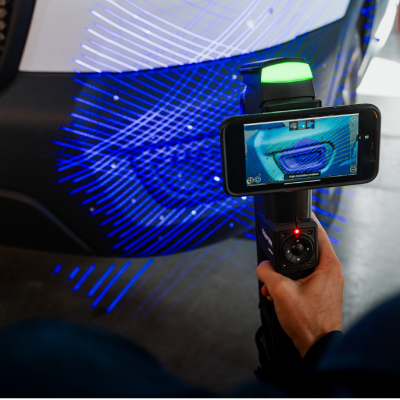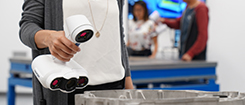April 15, 2024
Use of 3D scanner increases efficiency and reduces labor and material costs See the articleWe all enjoy the quirky quotes and the refined, harmonious aesthetics found in yearbooks. Have you ever thought of what it means for blind and visually impaired people not to make the most of this rite of passage? Here’s an inspiring story about how 3D technology made a difference.
The Indiana School for the Blind and Visually Impaired (ISBVI) teamed up with the Center for Digital Scholarship from Indiana University–Purdue University Indianapolis (IUPUI) to immortalize the academic milestone of 19 graduating seniors from ISBVI. Together, they came up with a very unique solution: use a 3D scanner to capture their portrait, send it to the school’s records, and eventually 3D print the file for them to feel and, in a way, “see” themselves.
Bridging the Gap Between the Blind and the Sighted Using 3D Measurement Solutions
The IUPUI University Library Center for Digital Scholarship commissioned a Creaform 3D scanner from Online Resources, Inc., leader in the CAD/CAM industry and 3D scanning/printing. The team at Online Resources was happy to help and deemed the project highly interesting for it bridged a gap between blind and sighted people, going from exclusively visual 2D representations to potentially touchable 3D portraits.

Emma Parker, a biomedical engineering sophomore and 3D digital assistant for the IUPUI University Library Center for Digital Scholarship, does a 3D scan of Kurt Stickradt, a senior at the Indiana School for the Blind and Visually Impaired. Photo by Tim Brouk, Indiana University.
3D Portrayal: A New Standard?
From a 3D measurement point of view, with typical target applications such as reverse engineering, product development and quality control, the scope of this project was not readily out there, in plain sight. But the Center for Digital Scholarship has a history of digitization works in dentistry, historical artefacts and stage pieces, to name a few. This 3D-portrayal venture was yet another very fertile land to explore.
Creativity was key in this project. And to push even farther the possible development boundaries in the future, Derek Miller imagined the rest of the story: “As this technology becomes more and more popular, people can, for example, let’s say you took kindergarteners who are blind, scanned them from kindergarten, all the way up to when they graduate; they now have a whole timeline yearbook of where they can go back and actually feel, and basically see themselves grow.”
The result is unusual, to say the least, but it draws from a unique sensory perception well exploited by the blind: the sense of touch. The process that goes from lining up to take the class “picture” to “feeling” the final result becomes a unique and positive experience for the students.
A 3D Portrait Is Worth a Thousand Pictures
The scanner itself embodies flexibility and versatility. Of course, the 3D-portrayal project for the blind and visually impaired was not typical, but that proves the point of the 3D scanner being multifunctional, not only used for static, non-living objects. The Go!SCAN 3D used in this case is a white light, structured light, portable 3D scanner that does not require targets. It uses geometry, color and texture as reference. Requiring very little to no configuration, this scanner generally acts as a vector for innovation, and that is just what it does in the ISBVI case. Its dynamic referencing feature allows both the object (i.e., the senior) and the scanner to move freely during the scanning process
IUPUI staff made 3D scans of blind high school students to create unique senior pictures for them.
The Go!SCAN 3D being Creaform’s fastest technology, the scanning took only about one minute for each student. “A picture is worth a thousand words, and an object is worth a thousand pictures. Our kids can have access to information through 3D printing, but this really personalizes it at a level we hadn’t thought of or anticipated,” said ISBVI Superintendent Jim Durst. Moreover, useable files are made available right after the scanning process – no absolute need for in between editing, export and reimport in third-party software.
It’s not the first time around the block for Creaform in matters of academia projects. Their products were used to scan their share of antique pieces, sculptures and other disparate elements in academic settings.
Creaform ACADEMIA Engages Students Toward Active Creation
Many institutions work with 3D scanners. For instance, the Makerspace (student-led design and innovation lab) at the College of Engineering at the University of Wisconsin-Madison, is equipped with a Creaform ACADEMIA scanner. Thanks to its portability and user-friendliness, most students can handle it, and the Makerspace can pursue its mission of bringing technology into the mainstream. In other words, the ACADEMIA range of solutions helps professors and students in conducting IT-enabled projects, from digitizing fragile relics in collaboration with the archeology department to designing a custom ergonomic wheel for a faculty formula SAE competition. The possibilities for bringing things from the physical to the digital world are endless: students can scan parts, modify them in a CAD software, 3D print them in the lab, see the 3D models in virtual reality, analyze parts on a screen and so on.
3D measurements, and in this particular case, 3D scanning, unlocks a myriad of opportunities, not only applicable to commercial interests, but also to human interaction and democratization of high-tech solutions for a better future.
Superintendent Durst plans on making a new tradition out of 3D portrayal: “When they come back years from now with their children and grandchildren,” he said, “they can say, ‘Here’s my picture. This is what I look like,’ without depending on somebody else to find their picture.”
Learn more about Creaform’s ACADEMIA packages, available for teaching and research projects.








